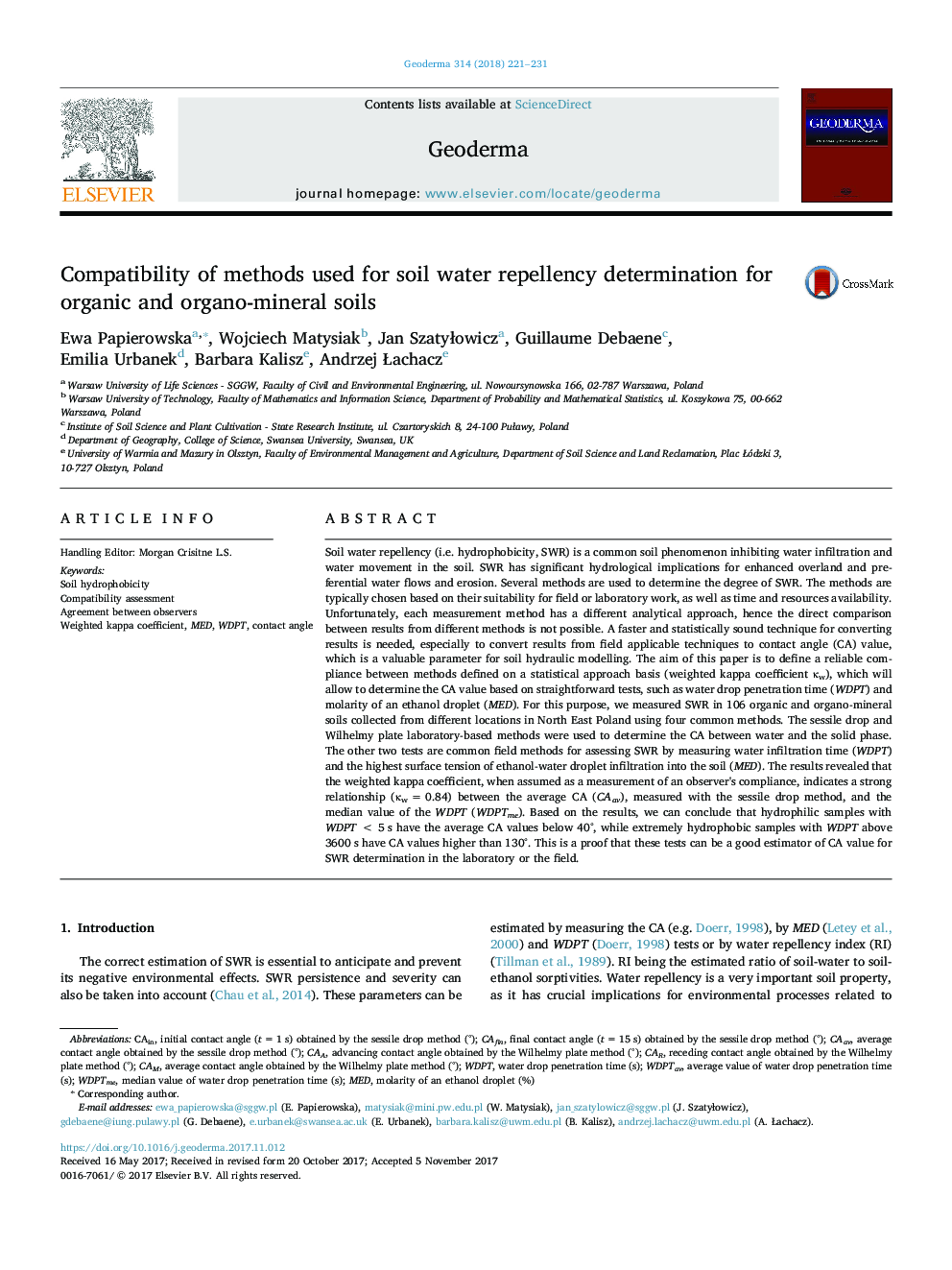| کد مقاله | کد نشریه | سال انتشار | مقاله انگلیسی | نسخه تمام متن |
|---|---|---|---|---|
| 8894313 | 1629403 | 2018 | 11 صفحه PDF | دانلود رایگان |
عنوان انگلیسی مقاله ISI
Compatibility of methods used for soil water repellency determination for organic and organo-mineral soils
ترجمه فارسی عنوان
سازگاری روش های مورد استفاده برای شناسایی بازدارندگی آب خاک برای ارگانیسم ها و مواد
دانلود مقاله + سفارش ترجمه
دانلود مقاله ISI انگلیسی
رایگان برای ایرانیان
کلمات کلیدی
موضوعات مرتبط
مهندسی و علوم پایه
علوم زمین و سیارات
فرآیندهای سطح زمین
چکیده انگلیسی
Soil water repellency (i.e. hydrophobicity, SWR) is a common soil phenomenon inhibiting water infiltration and water movement in the soil. SWR has significant hydrological implications for enhanced overland and preferential water flows and erosion. Several methods are used to determine the degree of SWR. The methods are typically chosen based on their suitability for field or laboratory work, as well as time and resources availability. Unfortunately, each measurement method has a different analytical approach, hence the direct comparison between results from different methods is not possible. A faster and statistically sound technique for converting results is needed, especially to convert results from field applicable techniques to contact angle (CA) value, which is a valuable parameter for soil hydraulic modelling. The aim of this paper is to define a reliable compliance between methods defined on a statistical approach basis (weighted kappa coefficient κw), which will allow to determine the CA value based on straightforward tests, such as water drop penetration time (WDPT) and molarity of an ethanol droplet (MED). For this purpose, we measured SWR in 106 organic and organo-mineral soils collected from different locations in North East Poland using four common methods. The sessile drop and Wilhelmy plate laboratory-based methods were used to determine the CA between water and the solid phase. The other two tests are common field methods for assessing SWR by measuring water infiltration time (WDPT) and the highest surface tension of ethanol-water droplet infiltration into the soil (MED). The results revealed that the weighted kappa coefficient, when assumed as a measurement of an observer's compliance, indicates a strong relationship (κw = 0.84) between the average CA (CAav), measured with the sessile drop method, and the median value of the WDPT (WDPTme). Based on the results, we can conclude that hydrophilic samples with WDPT < 5 s have the average CA values below 40°, while extremely hydrophobic samples with WDPT above 3600 s have CA values higher than 130°. This is a proof that these tests can be a good estimator of CA value for SWR determination in the laboratory or the field.
ناشر
Database: Elsevier - ScienceDirect (ساینس دایرکت)
Journal: Geoderma - Volume 314, 15 March 2018, Pages 221-231
Journal: Geoderma - Volume 314, 15 March 2018, Pages 221-231
نویسندگان
Ewa Papierowska, Wojciech Matysiak, Jan SzatyÅowicz, Guillaume Debaene, Emilia Urbanek, Barbara Kalisz, Andrzej Åachacz,
